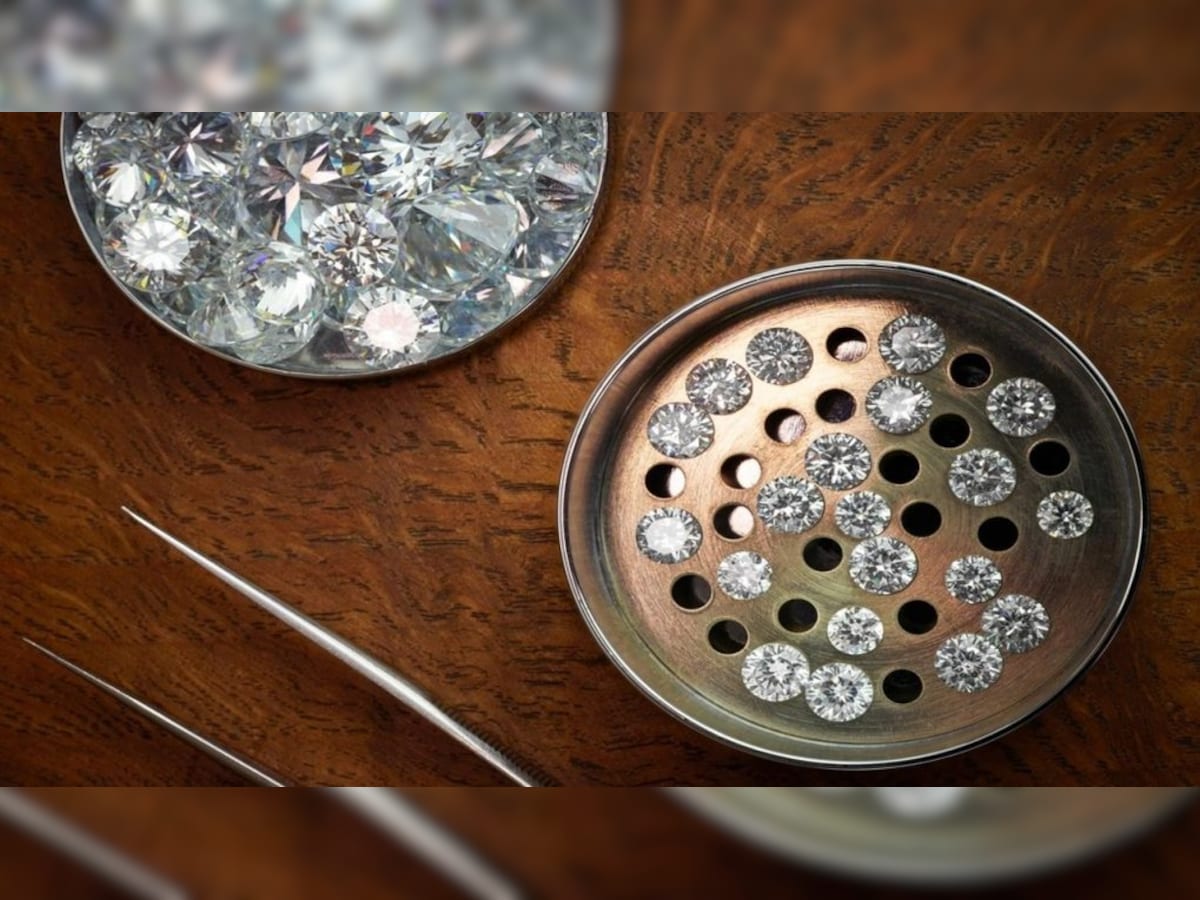Diamantes de Laboratorio vs Diamantes Naturales
 Posted On
Posted On
Introduction: Understanding the Diamond Debate
Diamonds have long captivated our imaginations, symbolizing love, luxury, and eternal commitment. Yet, behind their dazzling facade lies a complex debate between natural diamonds, forged deep within the Earth’s crust over millions of years, and their lab-grown counterparts, meticulously crafted in controlled environments. In this article, we delve into the intricacies of this ongoing discussion to shed light on the differences, similarities, and considerations surrounding lab-grown and natural diamonds.
Origins of Diamonds: Natural vs Synthetic
Natural Diamond Formation
Natural diamonds originate from the Earth’s mantle, where intense heat and pressure transform carbon atoms into the coveted crystalline structures we admire. These diamonds are then brought to the surface through volcanic eruptions, where they await discovery by miners.
Geological Processes at Work
The journey of a natural diamond begins billions of years ago, with volcanic activity and tectonic forces shaping the Earth’s crust. Deep within the mantle, diamantes de laboratorio vs diamantes naturales, carbon-rich materials undergo tremendous pressure and temperature, crystallizing into rough diamonds.
The Birth of Lab-Grown Diamonds
In contrast, lab-grown diamonds are created through advanced technological processes that mimic the natural conditions required for diamond formation. These synthetic gems are cultivated in controlled environments, offering a sustainable alternative to their naturally occurring counterparts.
Synthetic Creation Methods
Lab-grown diamonds are produced using two primary methods: High Pressure High Temperature (HPHT) and Chemical Vapor Deposition (CVD). HPHT involves replicating the conditions found deep within the Earth, while CVD entails depositing carbon atoms onto a substrate to form diamond crystals.
Quality and Characteristics: Assessing Diamonds
The quality of a diamond is typically evaluated based on the “4Cs”: Cut, Clarity, Color, and Carat weight. Whether natural or lab-grown, diamonds undergo rigorous grading processes to determine their characteristics and value.
Assessing the Quality of Diamonds
The 4Cs: Cut, Clarity, Color, and Carat
Diamond grading agencies meticulously assess each diamond based on its cut precision, clarity of internal and external flaws, color purity, and carat weight. These factors collectively determine the diamond’s brilliance, sparkle, and overall aesthetic appeal.
Understanding Diamond Grading
Grading reports provide detailed information about a diamond’s 4Cs, allowing consumers to make informed decisions when selecting their desired gemstone. Independent gemological laboratories, such as the Gemological Institute of America (GIA), employ standardized grading criteria to maintain consistency and accuracy.
Comparing Lab-Grown and Natural Diamonds
Consistency in Quality
One notable advantage of lab-grown diamonds is their consistency in quality and characteristics. Unlike natural diamonds, which may exhibit variations due to geological factors, synthetic diamonds can be engineered to meet specific standards, resulting in uniformity across batches.
Variations in Appearance
While man made diamonds offer consistency, some consumers prefer the unique characteristics and imperfections found in natural diamonds. These variations, such as natural inclusions and color tinges, contribute to the individuality and charm of each natural diamond.
Ethical and Environmental Considerations: A Matter of Conscience
In recent years, ethical and environmental concerns have fueled discussions surrounding the diamond industry, particularly regarding the sourcing and impact of natural diamonds. Lab-grown diamonds have emerged as a more sustainable and socially responsible alternative, aligning with the values of eco-conscious consumers.
Ethical Concerns Surrounding Natural Diamonds
Unveiling the Dark Side of the Diamond Industry
The extraction and trade of natural diamonds have been marred by ethical controversies, including human rights abuses, environmental degradation, and the financing of armed conflicts in diamond-rich regions. The term “conflict diamonds” refers to gems mined in conflict zones and used to fund warfare and civil unrest.
The Issue of Conflict Diamonds
Efforts to combat the trade in conflict diamonds led to the establishment of the Kimberley Process Certification Scheme, aimed at preventing the flow of illicit diamonds into the global market. However, criticisms persist regarding the effectiveness and integrity of the certification process.
The Ethical Appeal of Lab-Grown Diamonds
Sustainability and Social Responsibility
Lab-grown diamonds offer a transparent and ethical alternative to natural diamonds, free from the ethical dilemmas associated with traditional mining practices. By reducing the demand for new diamond mining, lab-grown diamonds contribute to environmental conservation and support ethical labor practices.
Paving the Way for a Greener Future
As consumers increasingly prioritize sustainability and ethical sourcing, lab-grown diamonds have gained traction as a symbol of conscious consumption. Jewelry brands and retailers are embracing lab-grown diamonds as part of their commitment to environmental stewardship and corporate social responsibility.
Affordability and Accessibility: Making Luxury Attainable
Beyond ethical considerations, the affordability and accessibility of diamonds play a significant role in shaping consumer preferences. Lab-grown diamonds offer a more accessible entry point into the world of fine jewelry, appealing to budget-conscious shoppers and expanding the market for diamond jewelry.
Breaking Down the Price Barrier
Cost Comparison: Lab-Grown vs Natural
Lab-grown diamonds are typically priced lower than their natural counterparts, reflecting the reduced production costs and absence of mining-related expenses. This affordability makes lab-grown diamonds an attractive option for couples seeking high-quality engagement rings and wedding bands without breaking the bank.
Making Luxury Attainable
The accessibility of lab-grown diamonds democratizes luxury, allowing individuals from diverse socioeconomic backgrounds to enjoy the beauty and symbolism of diamond jewelry. Whether purchasing a token of affection or commemorating a special occasion, consumers can find affordable options that align with their budgetary constraints.
Accessibility to All
Widening the Market Horizon
Lab-grown diamonds have broadened the market for diamond jewelry, appealing to a younger demographic of eco-conscious consumers and first-time diamond buyers. Online retailers and brick-and-mortar stores alike offer a wide selection of lab-grown diamond jewelry, catering to diverse tastes and preferences.
Empowering Consumers’ Choices
By providing greater accessibility and transparency, lab-grown diamonds empower consumers to make informed choices that align with their values and budgetary considerations. Whether prioritizing sustainability, affordability, or ethical sourcing, individuals can find the perfect diamond that resonates with their personal ethos.
Market Trends and Consumer Preferences: Evolving Dynamics
The jewelry industry is witnessing a paradigm shift as consumer preferences and market trends evolve in response to changing societal values and technological advancements. Lab-grown diamonds are gaining momentum as a symbol of modernity, innovation, and conscious consumption, challenging the dominance of natural diamonds in the market.
Shifting Paradigms in the Jewelry Industry
Embracing Innovation
Jewelry designers and manufacturers are embracing innovation and technology to meet the evolving demands of consumers. Lab-grown diamonds offer creative possibilities for designers, enabling them to experiment with unconventional shapes, sizes, and settings that cater to contemporary tastes.
Catering to Changing Tastes
The rise of lab-grown diamonds reflects changing consumer attitudes towards luxury and sustainability. Younger generations, in particular, are prioritizing ethical and environmental considerations when making purchasing decisions, driving demand for ethically sourced and responsibly produced diamonds.










